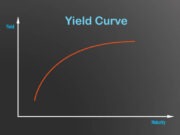As an investor or anyone involved in finance, understanding the concept of realized and recognized gain is crucial in order to make informed decisions. Both are important terms that help determine your overall profit or loss on an investment. In this article, we will explain the differences between realized and recognized gain and their significance in the financial world.
What is a realized gain?
A realized gain is a profit that is actually received after an investment is sold for more than its cost basis. It is an actual gain that has been realized or recognized because the transaction has been completed and money has changed hands. For example, if you bought a stock at $10 and sold it for $15, you have realized a $5 gain. This money is yours to keep and can be used to reinvest in other opportunities.
What is a recognized gain?
In contrast, a recognized gain is a profit that has been acknowledged but not necessarily received. This occurs when an asset has appreciated in value but hasn’t been sold yet. For instance, if you bought a stock at $10 and its current market value is $15, you have a recognized gain of $5. However, this gain is not realized until you actually sell the asset. Therefore, it is not yet taxable.
Why is the distinction important?
The distinction between realized and recognized gain is important for tax purposes. Realized gains are subject to taxation in the year they are sold, while recognized gains are taxable in the year they are realized or received. Therefore, recognizing gains can have tax implications and affect your overall tax liability. It’s important to understand this difference so that you can plan your investment strategy accordingly and make the most of your portfolio.
What about losses?
Realized and recognized losses work in the same way as gains. A realized loss is a loss that has been actually incurred when an asset has been sold for less than its cost basis. A recognized loss is the loss that is acknowledged but not yet realized. These losses can be used to offset realized or recognized gains and lower your tax liability.
Conclusion:
Understanding the difference between realized and recognized gain is fundamental for anyone involved in finance. It’s important to remember that realized gains are actual profits received after a transaction has occurred, while recognized gains are profits that haven’t been realized yet. Recognizing gains can have tax implications that should be considered when planning your investment strategy. Similarly, the same concepts apply to losses, which can be used to offset gains and lower your tax liability. By keeping these terms in mind, you can make informed decisions and better manage your investments.


































